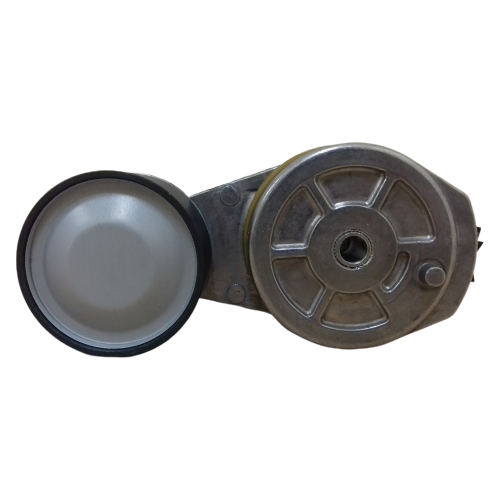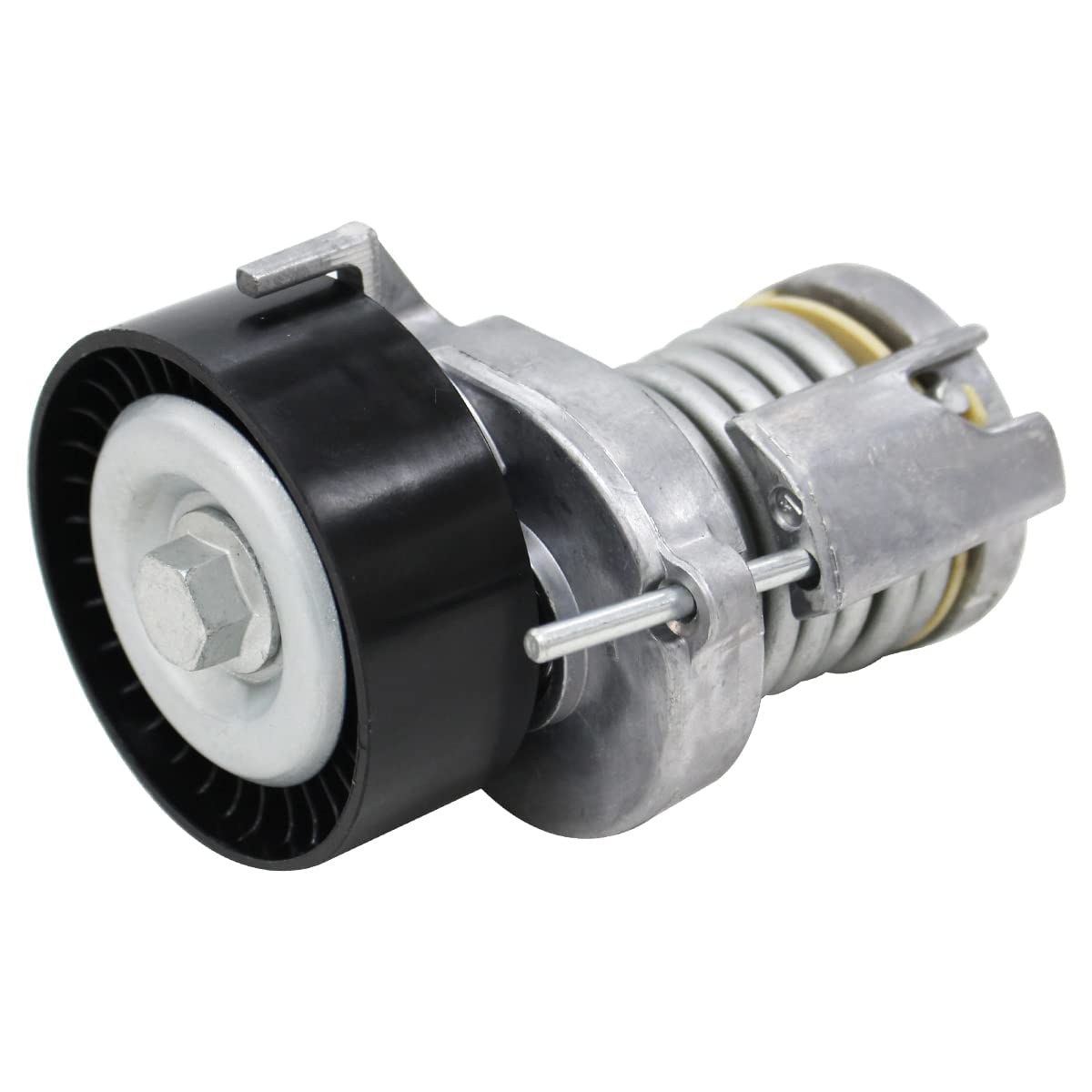Product Description
Product Description
Replacement 52609637,52721290 Belt Tensioner for Konecranes/linde Port Machinery Reach Stacker Spare Parts,
With good price and original.
Product Parameters
| Part Name | Belt Tensioner |
| Part No | 52609637,52721290 |
| Compatable with | Konecranes |
| Market Type | Original |
High Quality 52609637 Belt Tensioner for Konecranes/linde Port Machinery Spare Parts
We supply CZPT / Konecranes / CZPT / Fantuzzi / CVS port machinery empty container reach stacker spare parts.
If you need these,please contact us. /* January 22, 2571 19:08:37 */!function(){function s(e,r){var a,o={};try{e&&e.split(“,”).forEach(function(e,t){e&&(a=e.match(/(.*?):(.*)$/))&&1
| After-sales Service: | Spare Parts Warranty |
|---|---|
| Warranty: | Spare Parts Warranty |
| Type: | Belt Tensioner |
| Application: | Hoisting Machinery |
| Part Name: | Belt Tensioner |
| Part Number: | 52609637 |
| Customization: |
Available
| Customized Request |
|---|

What are the reliability and durability aspects of V-belt tensioners in ensuring consistent tension?
Reliability and durability are crucial aspects of V-belt tensioners in ensuring consistent tension in V-belt systems. A reliable and durable tensioner is essential for maintaining optimal belt performance, preventing slippage, reducing wear, and maximizing the lifespan of the belts. Here’s a detailed explanation of the reliability and durability aspects of V-belt tensioners:
- Construction Materials:
- Bearing Quality:
- Sealing and Lubrication:
- Tensioner Design and Engineering:
- Testing and Quality Control:
- Maintenance and Service:
- Manufacturer Reputation and Warranty:
The choice of construction materials plays a significant role in the reliability and durability of V-belt tensioners. High-quality materials, such as robust metals or durable polymers, are commonly used to withstand the forces and stresses encountered during operation. The materials should possess sufficient strength, corrosion resistance, and resistance to environmental factors to ensure long-term reliability and durability.
The quality and performance of the bearings used in V-belt tensioners are critical for their reliability. High-quality bearings ensure smooth rotation and proper functioning of the tensioner. Bearings with seals or protective coatings can provide additional protection against contamination, moisture, and debris, enhancing their durability and longevity.
Effective sealing and lubrication mechanisms in tensioners contribute to their reliability and durability. Seals or gaskets are used to prevent the ingress of contaminants, moisture, or dust into the tensioner, protecting its internal components and preserving its performance. Proper lubrication of moving parts, such as bearings or pivot points, reduces friction and wear, ensuring consistent tensioning and extending the tensioner’s lifespan.
The design and engineering of V-belt tensioners are crucial for their reliability and durability. A well-designed tensioner takes into account factors such as load capacity, operating conditions, and the specific requirements of the application. It should be engineered to withstand the expected forces, vibrations, and temperature variations encountered during operation, ensuring consistent tensioning over an extended period.
Manufacturers often subject V-belt tensioners to rigorous testing and quality control measures to ensure their reliability and durability. Testing may include load testing, endurance testing, temperature cycling, vibration testing, and environmental exposure testing. These measures help identify potential weaknesses, optimize design parameters, and validate the performance and durability of the tensioners before they are released to the market.
Proper maintenance and regular servicing of V-belt tensioners are essential for their long-term reliability. Following the manufacturer’s recommended maintenance schedule, including lubrication, inspection, and replacement of worn components, helps ensure consistent tensioning and extends the tensioner’s lifespan. Regular maintenance also allows for the early detection of any potential issues, allowing for timely corrective actions.
The reputation of the manufacturer and the warranty provided for the tensioners can be indicators of their reliability and durability. Established manufacturers with a track record of producing high-quality products are more likely to offer reliable and durable tensioners. A warranty that covers manufacturing defects or premature failures provides assurance and demonstrates the manufacturer’s confidence in the product’s reliability and durability.
In summary, the reliability and durability of V-belt tensioners are critical for ensuring consistent tension in V-belt systems. Factors such as construction materials, bearing quality, sealing and lubrication, tensioner design and engineering, testing and quality control, maintenance and service, as well as the manufacturer’s reputation and warranty, all contribute to the overall reliability and durability of the tensioners. By selecting high-quality tensioners and following proper maintenance practices, users can ensure consistent tensioning and maximize the performance and lifespan of V-belt systems.

How do V-belt tensioners contribute to reducing wear and increasing the efficiency of power transmission?
V-belt tensioners play a critical role in reducing wear and increasing the efficiency of power transmission in V-belt systems. They help maintain proper belt tension, ensuring optimal grip between the belt and pulleys. Here’s a detailed explanation of how V-belt tensioners contribute to reducing wear and increasing power transmission efficiency:
- Maintaining Proper Belt Tension:
- Optimizing Belt Grip:
- Reducing Belt Slippage:
- Promoting Even Load Distribution:
- Minimizing Belt Vibrations:
V-belt tensioners are designed to apply and maintain the correct tension in V-belt systems. When the tension is too loose, the belt can slip on the pulleys, leading to increased wear on the belt and reduced power transmission efficiency. Conversely, when the tension is too tight, excessive stress is placed on the belt and other system components, resulting in accelerated wear. V-belt tensioners ensure the optimal tension level, preventing slippage and excessive stress, and minimizing wear.
Proper tensioning of V-belts ensures optimal grip between the belt and pulleys. The tensioner maintains the desired tension, which allows the belt to effectively engage the pulley grooves. This optimal grip ensures efficient power transmission, as the friction between the belt and pulleys enables the transfer of rotational force. By maximizing belt grip, V-belt tensioners minimize power losses due to slippage, enhancing the overall efficiency of power transmission.
One of the main causes of wear in V-belt systems is belt slippage. Slippage occurs when the belt loses traction with the pulleys, resulting in a loss of power transmission efficiency and increased wear on the belt. V-belt tensioners help prevent slippage by maintaining the proper tension, which ensures that the belt remains securely engaged with the pulleys. By reducing belt slippage, V-belt tensioners minimize wear on the belt and other components, improving the overall system efficiency.
Proper tensioning of V-belts helps promote even load distribution across the belt and pulleys. When the tension is correctly set, the load is evenly distributed along the width of the belt, minimizing localized stress points. This even load distribution reduces wear on specific areas of the belt, prolonging its lifespan. Additionally, by evenly distributing the load, V-belt tensioners help prevent premature wear on the pulleys and other components, contributing to increased system efficiency.
Improperly tensioned V-belts can induce vibrations during operation, leading to increased wear and reduced power transmission efficiency. V-belt tensioners help minimize belt vibrations by maintaining the correct tension, ensuring a stable and secure operation. By reducing belt vibrations, V-belt tensioners contribute to decreased wear on the belt and other system components, improving power transmission efficiency.
In summary, V-belt tensioners contribute to reducing wear and increasing power transmission efficiency by maintaining proper belt tension, optimizing belt grip, reducing belt slippage, promoting even load distribution, and minimizing belt vibrations. These factors collectively ensure efficient power transfer, reduce wear on the belt and other system components, and enhance the overall performance and longevity of V-belt systems.

Can you explain the significance of proper tensioning in V-belt-driven machinery and equipment?
Proper tensioning plays a crucial role in V-belt-driven machinery and equipment. It is essential for ensuring optimal performance, efficient power transmission, and extended component life. Here’s a detailed explanation of the significance of proper tensioning in V-belt-driven systems:
- Effective Power Transmission:
- Prevention of Slippage:
- Extended Component Life:
- Reduced Maintenance Requirements:
- Optimized System Performance:
- Enhanced Safety:
Proper tensioning is vital for effective power transmission in V-belt-driven machinery and equipment. The tension applied to the V-belt ensures that it remains tightly engaged with the pulleys, creating frictional forces necessary for transferring power. Insufficient tension can result in slippage between the belt and the pulleys, leading to power loss, reduced efficiency, and compromised performance. By maintaining the correct tension, V-belt-driven systems can achieve efficient power transmission, ensuring that the machinery operates at its intended power output.
One of the primary functions of proper tensioning is to prevent slippage between the V-belt and the pulleys. Slippage occurs when the belt loses traction with the pulleys, leading to inefficient power transmission and reduced performance. Proper tensioning ensures that the V-belt remains securely engaged with the pulleys, minimizing the risk of slippage even under varying loads or during sudden changes in speed or torque. By preventing slippage, proper tensioning helps maintain reliable power delivery, consistent operation, and accurate timing in timing belt applications.
Proper tensioning significantly contributes to the extended life of V-belts and other components in V-belt-driven machinery. When the tension is too loose, the V-belt can experience excessive flexing, leading to premature wear, fatigue, and ultimately, failure. On the other hand, excessive tension can cause increased stress on the V-belt and the pulleys, leading to accelerated wear and potential damage. By maintaining the correct tension, V-belts experience optimal operating conditions, reduced wear, and prolonged lifespan. Proper tensioning also helps minimize stress on other components, such as bearings, shafts, and pulleys, further extending their service life.
Proper tensioning in V-belt-driven machinery can help reduce maintenance requirements. Inadequate tension or slippage can lead to various issues that require frequent maintenance, adjustments, or component replacements. These issues may include belt misalignment, premature wear, increased heat generation, or even system failures. By maintaining the correct tension, V-belt systems operate within their designed parameters, minimizing the occurrence of these problems. Reduced maintenance needs not only save time and effort but also contribute to lower maintenance costs and increased productivity.
Proper tensioning is essential for achieving optimized system performance in V-belt-driven machinery and equipment. When the V-belt is appropriately tensioned, it operates efficiently, minimizing energy losses and maximizing power transmission. This, in turn, leads to improved overall system performance, higher productivity, and reduced operating costs. Proper tensioning ensures that the machinery operates at its intended power levels, maintains accurate timing, and delivers consistent performance, resulting in reliable and efficient operation.
Proper tensioning also contributes to enhanced safety in V-belt-driven machinery and equipment. Slippage or inadequate tension can lead to sudden belt failures, unexpected power losses, or even accidents. By maintaining the correct tension, the risk of such incidents is significantly reduced. Properly tensioned V-belts ensure reliable power transmission, minimizing the potential for unexpected equipment malfunctions or sudden stops. This enhances operator safety and helps prevent damage to the machinery or surrounding equipment.
In summary, proper tensioning is of utmost importance in V-belt-driven machinery and equipment. It ensures effective power transmission, prevents slippage, extends component life, reduces maintenance requirements, optimizes system performance, and enhances safety. By maintaining the correct tension, V-belt-driven systems operate efficiently, reliably, and safely, contributing to increased productivity, reduced downtime, and improved overall operational performance.


editor by CX 2024-05-14